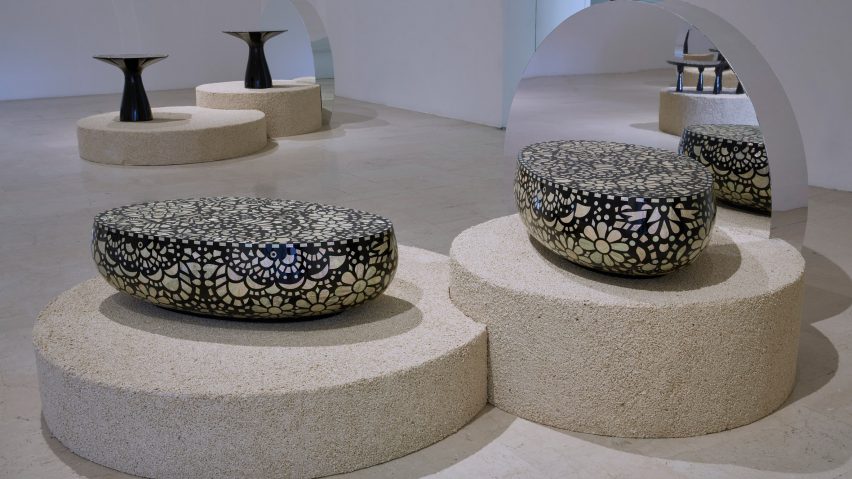
Six designers reimagine traditional Korean mother-of-pearl craft for modern life
Marcel Wanders, Stefano Giovannoni and Elena Salmistraro are among a group of international designers to have put a contemporary spin on the traditional Korean craft of mother-of-pearl inlay, in a collaboration with local artisans.
The six designers were commissioned by South Korea's Duson Gallery to produce a series of coffee tables in conjunction with artisans from the Tongyeong area, which is renowned for its work with mother-of-pearl, known in Korean as "jagae".
The resulting pieces were shown in the exhibition Mother-of-Pearl Tables at the Triennale Milano during Milan design week.
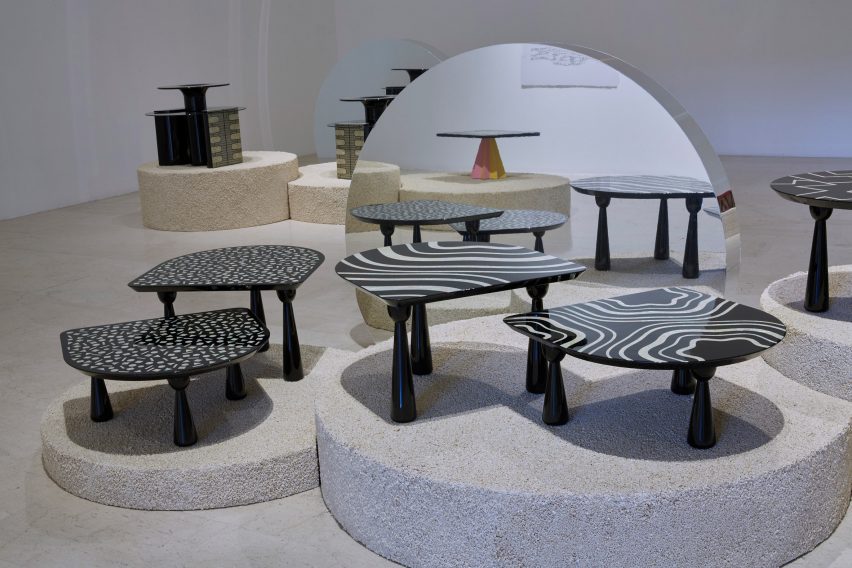
The Duson Gallery aimed for the project to ensure the future of the craft of "najeon" or "najeon-chilgi", which involves inlaying mother-of-pearl into lacquered objects and has a history in the region dating back over 1,000 years.
"A lot of mother-of-pearl artisans think the technique is finished," Duson Gallery founder Yangsoo Kim told Dezeen. "But I'm trying to cheer them up. I really want mother-of-pearl to be one of the luxury materials."
"When we think about luxury items from the West, we think of Louis Vuitton or Hermes," he continued. "But 150 years ago, a lot of luxury came from China, the Qing Dynasty and Japan also. Now we have to make a balance of East and West in a globalised world."
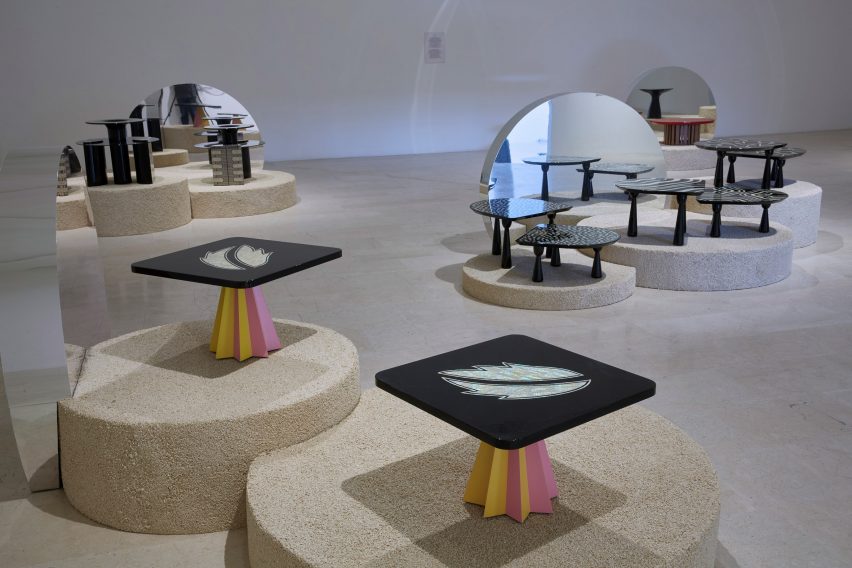
The tables in the exhibition include a piece developed by Studio Alessandro Mendini from one of the late designer's sketches. Titled Foglia, it has a large jagae leaf inlaid into its black top and a contrasting pink and yellow star-shaped base.
The studio worked with Korean designer Younghee Cha to realise the piece, which then became the starting point for the gallery to invite a larger group of international designers to participate.
Those designers include Wanders, who created a black tub-shaped design titled Fiore Fossil with a black lacquered form almost entirely covered with inlay.
Wanders' aim with the piece was to create the effect of a pebble being sliced open to reveal its interior, recalling and honouring the source for mother-of-pearl, mollusc shells.
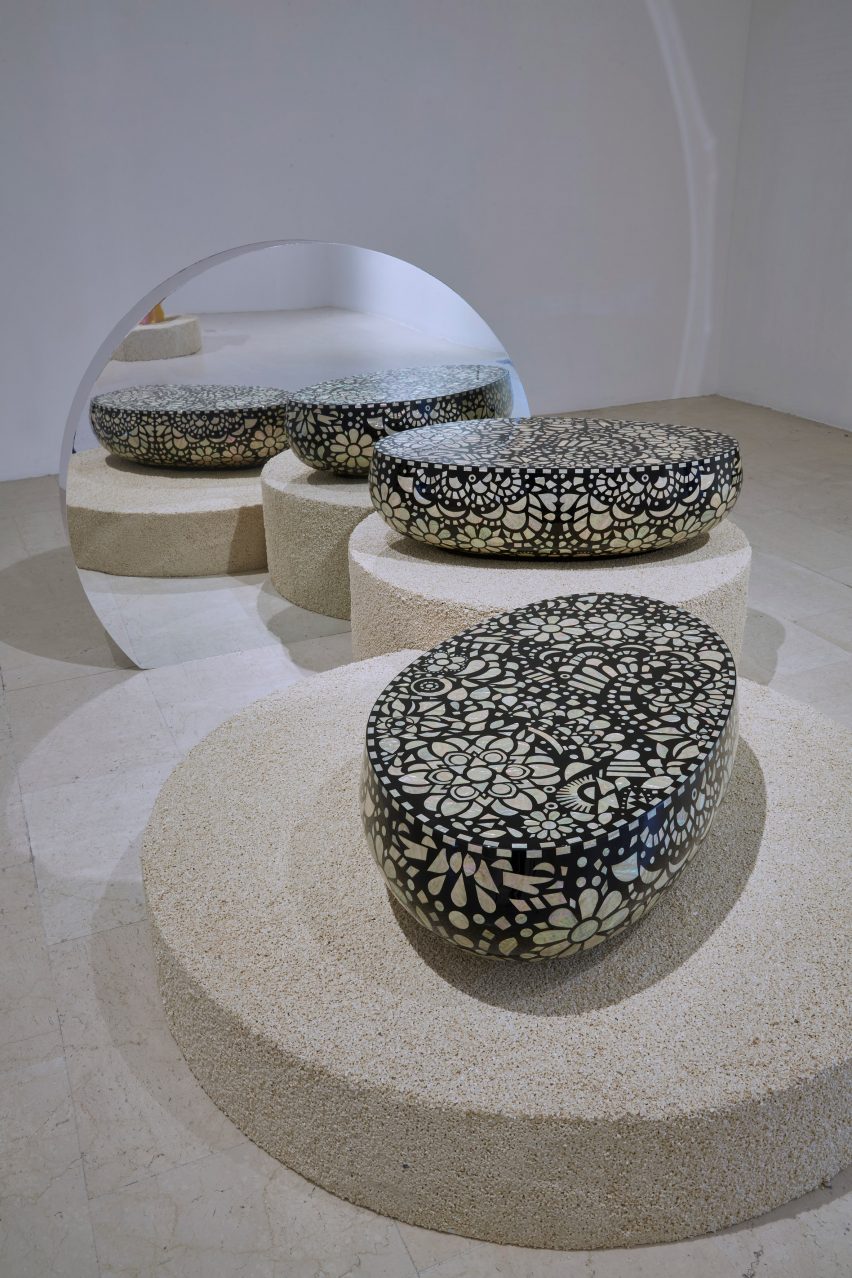
"This material is basically an oyster, it's basically a natural thing that's part of the sea," Wander told Dezeen. "So I didn't want it to just be a surface. Instead, I made this pebble that reveals its true nature if you slice it, and then this coral-type natural mural pops out."
The most difficult of the designs for the artisans to make was Salmistraro's, which has a cyclone-like shape with a central void created through rotation. The form references a traditional Korean style of hat called a gat.
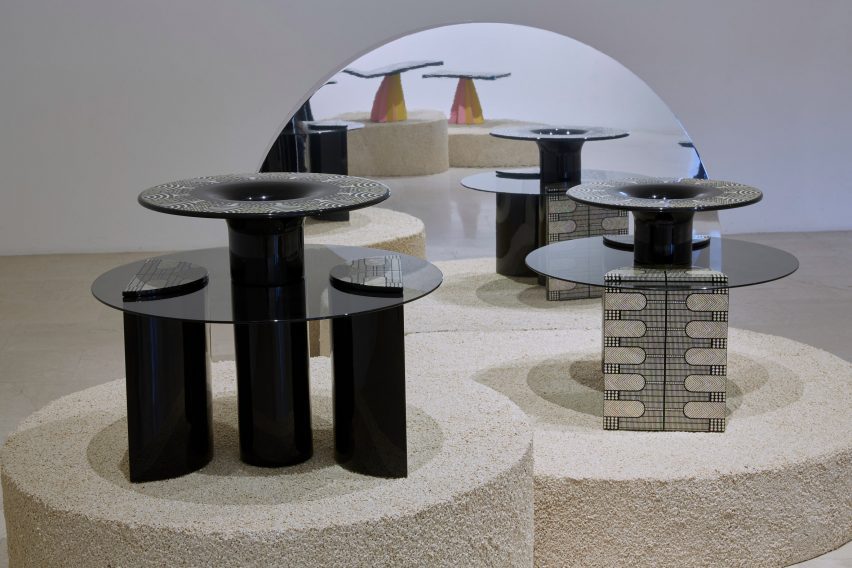
As well as complex and finicky inlay along its top and some side surfaces, the piece incorporates a circular pane of smoked glass that cuts through its trio of black laquered base forms, and that the Duson Gallery said underscores "the elegance and lightness of the object".
Giovannoni's contribution is Cherry Tree, inspired by the traditional arboreal symbol of the East. Its lacquered ash wood base is meant to recall the trunk of the tree, while the tabletop represents a sectional view of its branches, with a curving, winding pattern of jagae inlay.
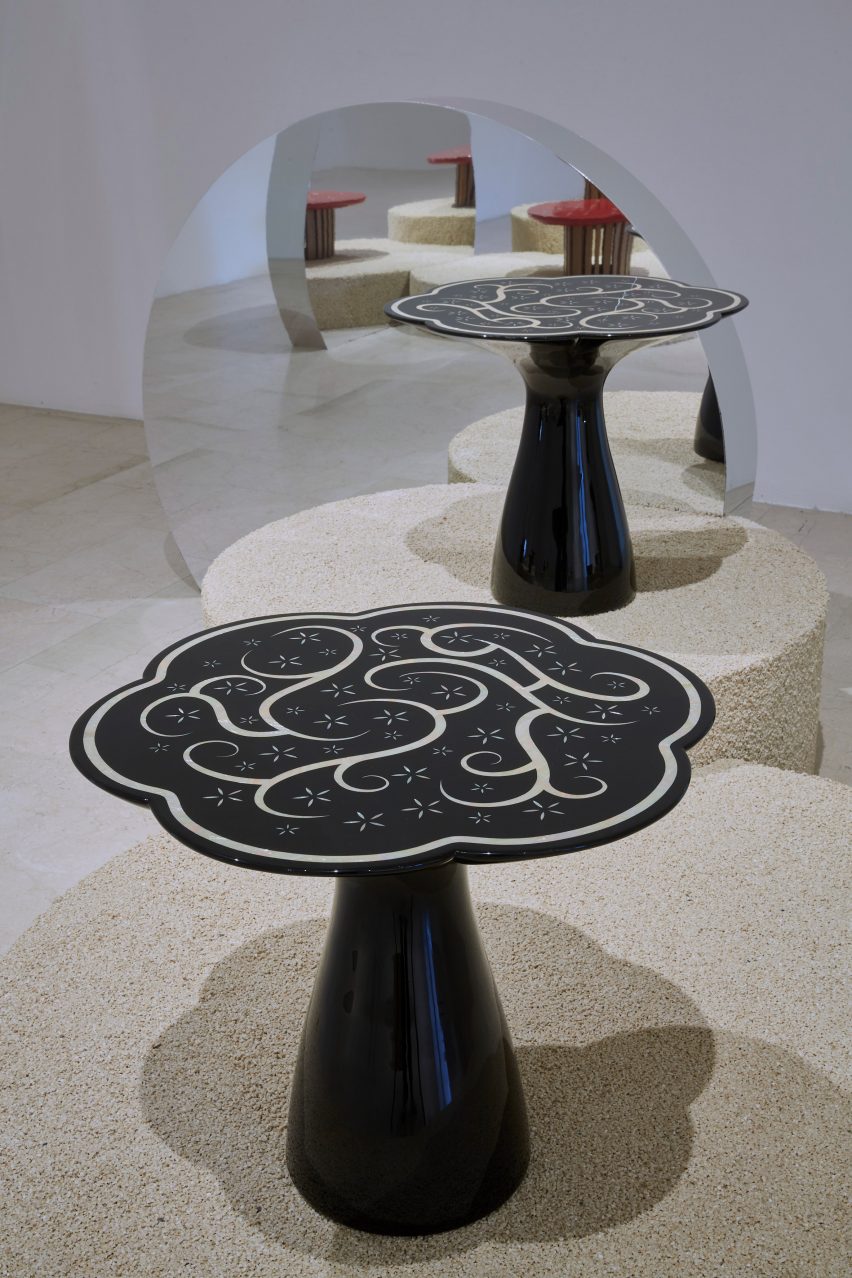
A departure from black laquer comes with designer Marco Zanuso Jr's Soban, which has a glossy red top with contrasting slatted wood legs and a scattering of circular inlaid pieces in different sizes. A reinterpretation of the traditional Korean tray table with the same name, Soban is also meant to nod to the Italian art of the 1960s.
The final design, Ocean, comes from Cha, who also assisted with Mendini's table. Her nesting tables feature two jagae motifs — one with a contour-like pattern of lines suggesting waves crashing on the shore, and the other with small geometric pieces meant to reference the look of shells at the bottom of the sea.
The designs are all available in limited editions of nine pieces per model. Each is complex to produce, with the najeon technique incoporating over 30 steps including preparing the base, carving indentations for the inlay and gluing the pieces in.
Wanders described it as a "very unique" and "excellent quality" craft, while Duson Gallery's Yangsoo Kim said jagae should be better known for its interesting properties.
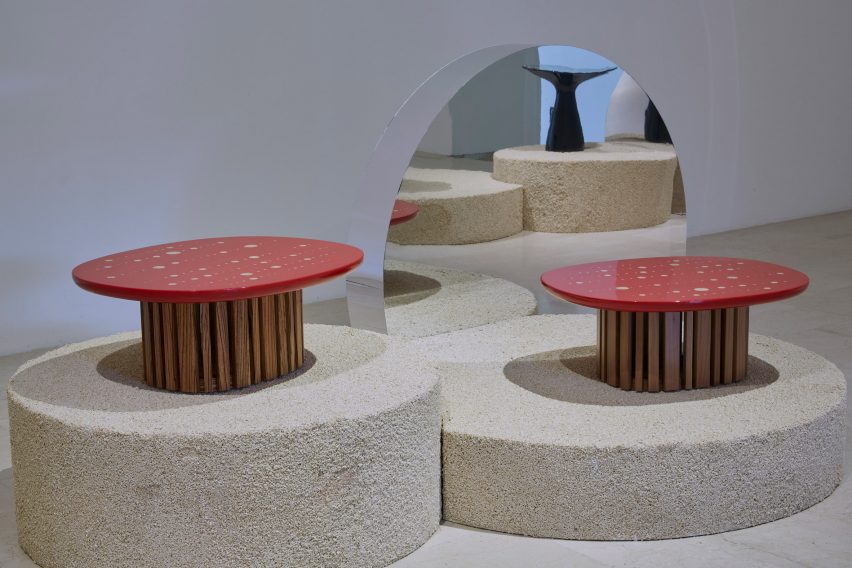
"Mother-of-pearl was originally exchanged as money so this was one of our first materials," said Kim. "Depending on the light and angles it looks totally different. Nobody can say what the colour is."
"Mother-of-pearl is a really traditional natural material but it has a character for the future."
Najeon is similar to the craft of marquetry, where complex patterns are created by inlaying veneers or other material, and which has in past years been revived by designers such as Jaime Hayon, who created a colourful pavilion using the technique, and Adam and Arthur, who designed a statuesque cabinet.